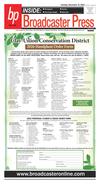12
12 Broadcaster Press
September 24, 2013 www.broadcasteronline.com
How To Prepare
Winterizing Vehicles
An Important
Your Yard For Winter
Step For Drivers
As fall gradually gives
way to winter, vehicle
owners often sigh at the
thought of driving in
winter weather or spending weekday mornings
clearing their vehicles of
ice before heading to the
office. But manning the
wheel through another
snowstorm or whittling
away another night’s
worth of ice from a car’s
windshield are not the
only rites of passage
motorists must endure as
cold weather returns.
Winterizing a vehicle
can improve vehicle performance during a time
of year that, in many
locales, can be especially
harsh on automobiles.
Low temperatures make
for less than ideal conditions for engines to run,
while potholes left
behind by snow plows
can damage a vehicle’s
wheels and may even
result in flat tires and a
damaged suspension system. In addition, salt
used to improve traction
on roadways can cause
rust. Short of moving to a
locale with mild winters,
there’s little drivers can
do to protect their vehicles from harsh winter
weather. But winterizing
a vehicle can prevent
some of the more common issues drivers may
encounter when the temperatures dip below
•Take time out for
your tires. Winter weather can limit traction, putting the safety of drivers
and their passengers in
jeopardy. When possible,
avoid driving in the
snow, and steer clear of
roads where ice and black
ice are known to form.
While such measures
can greatly reduce your
risk of being in an accident, you likely can’t
avoid driving entirely
come the winter. Drivers
who want improved traction from their tires
throughout the winter
can purchase winter tires
for their vehicles. Such
tires can more effectively
handle roads that are
covered in snow and ice
than all-season tires.
Another way to improve
traction during the winter months is to constantly monitor tire pressure,
which decreases more
rapidly when the weather
is cold. Properly inflated
tires provide better traction and protect against
damage that may occur
when driving over potholes.
•Consider a low-viscosity oil in the winter.
The owner’s manual of
your vehicle may recommend you use a lower
viscosity motor oil to
counter the dip in temperature that’s synonymous with winter. When
the temperatures outside
fall, the oil inside your
vehicle thickens, and a
thicker oil won’t circulate
through the engine as
well. This can cause
engine problems because
the engine won’t be adequately lubricated. A
low-viscosity oil is naturally thinner, so it may
improve lubrication
throughout the winter.
The vehicle owner’s manual should recommend
oils based on climate. If
not, talk to your mechanic about changing from
the oil you use throughout the year to a low-viscosity alternative during
the winter.
•Inspect your vehicle
before winter arrives. No
one wants to be out on
the road during the first
snowstorm of the year
only to discover certain
components are not
working properly. Belts
and hoses, while durable,
can be put through strenuous conditions during
the winter months, so a
close inspection of belts
and hoses should be conducted in late fall. In
addition, windshield
wipers are especially
important in winter,
when snowfall can drastically impact visibility. You
will want your wipers
working at full capacity
once the winter begins,
so replace older wipers
; 3
3OL35LH[33 ZMIS[
.
“Get Organized - Stay Organized”
• Need to clean out your home or garage?
• Do you have TOO MUCH STUFF?
• Are you feeling overwhelmed?
Organizing
Downsizing
House Cleaning
Decorating Ideas/Painting
Personal Assistance - Errands/Shopping
The Neat Freaks are here to help!
We offer assistance organizing any room in your
home from your attic to your basement. We can
eliminate clutter, provide storage ideas and tackle
paper pile-up syndrome to ultimately simplify
your life.
Contact us today to set up your
FREE personal appointment.
Phone: (605) 760-3223 or (605) 760-3224
Website: www.DiscoverNeatFreaks.com
(shelf life for standard
wipers is typically one
year) and use a de-icing
windshield washer fluid
to maximize visibility.
Another component
that must be inspected is
your car’s battery. Many
drivers have experienced
a dead battery, which, in
warm weather, is more of
a nuisance than a health
concern. In cold weather,
a dead battery can threaten your health if you find
yourself stranded in cold
weather. Especially low
temperatures can compromise a battery’s power
by as much as 50 percent, so have your battery inspected in late fall
and replace it if need be.
•Don’t be caught off
guard. Part of winterizing
a vehicle is being prepared if the vehicle
breaks down. Make sure
you have extra washer
fluid in your vehicle’s
trunk, and don’t forget to
include an ice scraper,
snow brush or even a
snow shovel in the trunk
as well. A snow shovel
may be necessary if you
need to dig your car out
if it’s been buried somewhere other than your
driveway. Other items to
carry in your trunk
include a blanket, a
change of clothes, an
extra hat, an extra pair of
gloves, some nonperishable food, and a few bottles of water.
Winter can be especially harsh on automobiles. But drivers can take
several preventive steps
to ensure their vehicle is
safe and sound on the
roads this winter.
n Metro Creative Connection
Changing seasons can
be tough on a lawn.
Always exposed to the
elements, lawns can fare
especially poorly upon
the arrival of winter, a
season known for its
harsh and unforgiving
weather. Even the most
perfectly manicured lawn
can suffer at the hands of
winter weather, causing
homeowners to sit idly by
and hope spring arrives
that much sooner.
But as punishing as
winter weather can be on
a lawn, homeowners are
not without recourse.
Much like homeowners
can take steps to help
their lawns survive
sizzling summer heat
waves during the warmer
months of the year, they
also can take steps to help
their lawns make it
through the often stormy
weather synonymous
with winter.
•Don’t procrastinate.
Putting off the process of
winterizing a lawn can
put that lawn in jeopardy.
Lawns will turn dormant
the closer you get to
winter, and they may
reject the nutrients found
in fertilizer as a result.
Those nutrients will
prove valuable once
spring weather returns,
so start the winterization
process in early fall so the
lawn has sufficient time
to absorb nutrients and
strengthen itself for the
seasons to come.
•Treat trouble spots.
Summer can be even
harder on a lawn than
winter, especially for
those lawns located in
regions where heat waves
and drought are
common. In such
instances, certain spots
on the lawn seem to be
hit harder than others,
and those spots should
get special attention
when winterizing the
lawn. Check the soil’s pH
levels before fertilizing or
applying any treatments.
Such a test will reveal
which spots need the
most attention, and
treating trouble spots
now will make spring
lawn care that much
easier.
•Aerate the property.
Aerating can help a lawn
recover after a long
summer and help it
survive the potentially
harsh months that lie
ahead. Aerating, which
involves puncturing the
soil or removing cores of
soil from the ground, can
restore a lawn to health
by improving its drainage
and allowing more water
and air to reach the roots
of the grass. Aerating also
makes it easier for
nutrients to penetrate the
soil, which encourages a
healthier lawn over the
long haul. Aerators can
be purchased or rented,
but homeowners
uncomfortable with the
process may want to
enlist a professional to
tackle the job. Parents of
small children who spend
lots of time in the yard
may need to aerate their
lawn more than most, as
heavy lawn traffic
compresses the soil, a
potentially harmful
process that can be
reversed via aeration.
•Take steps to
strengthen the roots.
Aerating promotes
stronger roots, but
homeowners might also
want to find a winterizing
product with potassium
and phosphorous, both of
which can strengthen
roots. Different types of
lawns will respond
differently to certain
winterizers, so discuss
your options with a lawn
care professional who can
help you find the right fit
for your property.
•Remove debris from
the lawn. Debris left on a
lawn over the winter can
prove very harmful. Piles
of debris left scattered
around a lawn can
suffocate the blades of
grass, leading to longterm damage and a
potentially unsightly
lawn come the spring. In
addition, piles of debris
might make good homes
for organisms that can
damage the lawn. As fall
moves into winter,
periodically remove all
debris, including leaves
and branches fallen from
trees.
•Make the lawn offlimits once the
temperatures dip below
freezing. A lawn should
be off-limits once the
ground freezes. Stepping
on grass that has frozen
will leave noticeable
footprints, and walking
on frozen grass can kill
the turf. When winter
arrives, people should
avoid using the lawn as a
shortcut into and out of
your home and stick to
driveways and sidewalks
instead.
n Metro Creative Connection
Adams
Construction
Roofing • Siding • General Construction • Residential
Licensed and Bonded
605.202.0418 • adam_palsma@hotmail.com



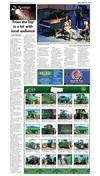
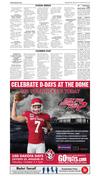


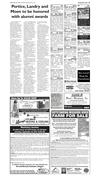
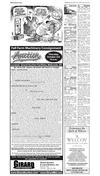
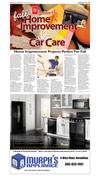
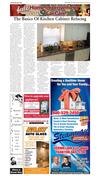
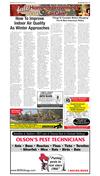


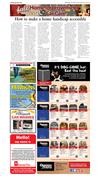
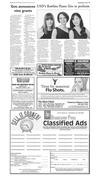
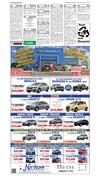
 Previous Page
Previous Page





